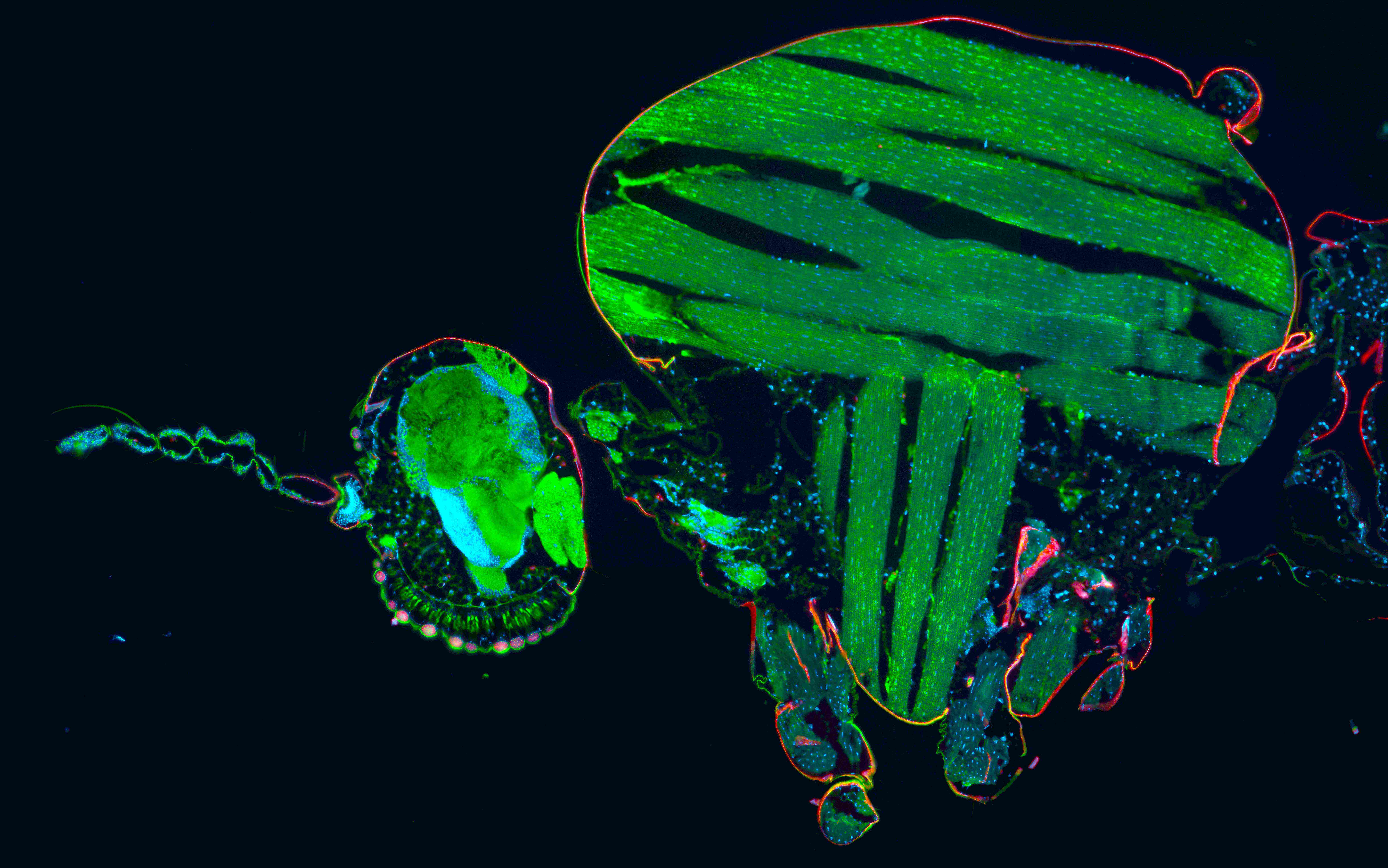First mosquito cell atlas published in Science
Professor Oliver Billker, Director of MIMS, is a senior author on the paper, 'Mosquito cellular immunity at single-cell resolution'; findings that will help researchers to further understand how mosquitoes fight malaria and other infections.

Scientists have created the first cell atlas of mosquito immune cells, to understand how mosquitoes fight malaria and other infections. Researchers from the Wellcome Sanger Institute, Umeå University, Sweden and the National Institutes of Health (NIH), USA, discovered new types of mosquito immune cells, including a rare cell type that could be involved in limiting malaria infection. They also identified molecular pathways implicated in controlling the malaria parasite.
Published on Thursday 27 August, 2020 in Science, the findings offer opportunities for uncovering novel ways to prevent mosquitoes from spreading the malaria parasite to humans and break the chain of malaria transmission. The atlas will also be a valuable resource for researchers trying to understand and control other mosquito-borne diseases such as Dengue or Zika.
Malaria is a life-threatening disease that affects more than 200 million people worldwide and caused an estimated 405,000 deaths in 2018 alone, the majority of which were children under five*. It is caused by Plasmodium parasites, which are spread via the bites of female Anopheles mosquitoes. Breaking the chain of transmission from human to mosquito to human is key for reducing the burden of malaria.
The mosquito immune system controls how the insect can tolerate or transmit parasites or viruses, however little is known about the exact cell types involved. In this first in-depth study of mosquito immune cells, a team of researchers studied two types of mosquito: Anopheles gambiae, which transmits malaria, and Aedes aegypti, which carries the viruses that causes Dengue, Chikungunya and Zika infections.
Using cutting edge single cell techniques the researchers analysed more than 8,500 individual immune cells to see exactly which genes were switched on in each cell and identify specific molecular markers for each unique cell type. The team discovered there were at least twice as many types of immune cell than had previously been seen, and used the markers to find and quantify these cells in circulation, or on the gut and other parts of the mosquito. They were then able to follow how Anopheles mosquitoes and their immune cells reacted to infection with the Plasmodium parasite.
Dr Gianmarco Raddi, a first author on the paper from the Wellcome Sanger Institute, said: “We have carried out the first ever large scale survey of the mosquito immune system, and using single cell sequencing technology we found immune cell types and cell states that had never been seen before. We also looked at mosquitoes that were infected with the Plasmodium parasite and for the first time were able to study their immune response in molecular detail, and identify which cells and pathways were involved.”
A previous study from the NIH team had shown that a process called ‘immune priming’** could limit the ability of mosquitoes to transmit malaria, by activating the mosquito immune system to successfully fight the parasite. In this study, the researchers discovered that one of the newly discovered immune cell types had high levels of a key molecule needed for immune priming, and could be involved in that process.
Dr Oliver Billker, joint senior author on the paper previously from the Wellcome Sanger Institute and now based at Molecular Infection Medicine Sweden, Umeå University, said: “We discovered a rare but important new cell type we called a Megacyte, which could be involved in immune priming, and which appears to switch on further immune responses to the Plasmodium parasite. This is the first time a specific mosquito cell type has been implicated in regulating the control of malaria infection, and is a really exciting discovery. We now need to carry out further studies to validate this and better understand these cells and their role.”
The researchers showed that specific types of immune cell – granulocytes – increased in number in response to infection, and revealed that some of these could develop into other immune cells. They also discovered that immune cells in the mosquito’s gut and other tissues are actively recruited into the circulation to fight infections after lying dormant on the mosquito fat body.
Dr Sarah Teichmann, an author from the Wellcome Sanger Institute, said: “The team has created the first mosquito immune cell atlas, to shed light on how mosquito immune systems fight infections. Mosquitos appear to have a sweet spot of immunity to parasites like malaria, with enough immunity to the infection that it doesn’t kill the mosquito but not enough to remove the parasite. This atlas offers a vital resource for further research, which could reveal ways to modify the mosquito immune response to break the chain of disease transmission.”
For further details, please visit http://www.mims.umu.se/news-events/248-latest-news/1979-the-first-mosquito-cell-atlas-is-published-now-in-science-where-mims-director-oliver-billker-is-a-joint-senior-author.html
Publication:
Gianmarco Raddi and Ana Beatriz F. Barletta et al. (2020) Mosquito cellular immunity at single-cell resolution. Science. DOI 10.1126/science.abc0322To read the full article, please go to: https://science.sciencemag.org/content/369/6507/1128.full